
Mammals Around Las Vegas, Wildlife Around Las Vegas
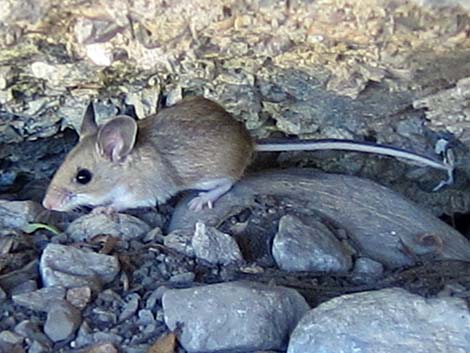 On tail, line between dark and light is distinct |
General: North American Deermice (Peromyscus maniculatus) are small rodents with dark brown pelage above and white below. The ears are not too long, and the tail is about as long as the body. The tail is black above, white below, and the line between the two is distinct. Also, the dark on the tail forms a distinct stripe on the top of the tail. The pelage of young mice (nestlings and juveniles) is gray, and the tail is short compared to adults. The distinct line on the tail between the upper dark and lower light is obvious. Taxonomy: Order Rodentia; Family Cricetidae. Formerly Deer Mouse |
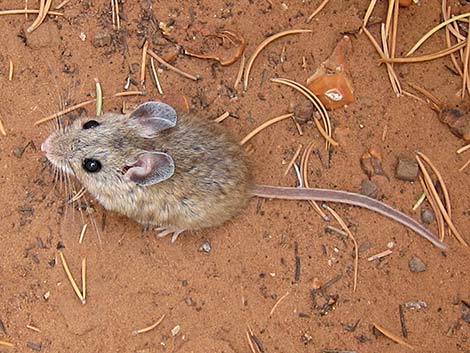 |
The North American Deermouse is one of the more common "deer mice" or "field mice" at higher elevations in the Mojave Desert. Deer Mice live in lower elevation vegetation communities in the Lower (Creosote-Bursage Flats) and Upper Sonoran (Mojave Desert Scrub) life zones. They build nests under rocks, in old burrows of other animals, and in piles of dead vegetation. They sleep during the day and come out to forage on seeds and vegetation during the night. They also eat bugs and carrion when they can, and they happily raid camper's food. North American Deermice look like all of the other "deer mice" (members of the genus Peromyscus) and can be difficult to identify with certainty. For the lay person, passing them off as "field mice" is good enough. For those concerned, consult range maps to ensure that this species is a possibility in the area, then rule out other possibilities by examining the ears and tail. |
 |
Around Las Vegas, the possibilities are Cactus Deermouse, Canyon Deermouse, North American Deermouse, and Pinyon Deermouse. In the North American Deermouse, the ears are short, which rules out Pinyon Mice (ears more than 1 inch long). The tail is bi-colored, and the line between the dark and light is distinct, ruling out Cactus Deermouse and Canyon Deermouse (indistinct line). North American Deermouse are preyed upon by everything: snakes, owls, kit fox, large scorpions, lizards, and anything else that can catch them. They have high reproductive rates (lots of litters and lots of pups per litter), so they survive high predation rates. All deer mice can carry Hanta Virus, a potentially deadly disease that attacks the respiratory system with flu-like symptoms. Despite the hysteria, however, it is difficult to contract hanta virus. I have handled thousands of Peromyscus, always in less than sanitary conditions, and I've never gotten sick or died from Hanta Virus. |
 |
If you were a tasty little bug or a big seed, this might be the last face you ever see! |
 Deer mouse subadult (left) and adult (right; more red) |
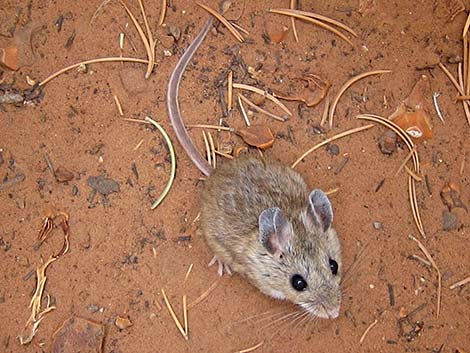 Distinct dark line on top of tail |
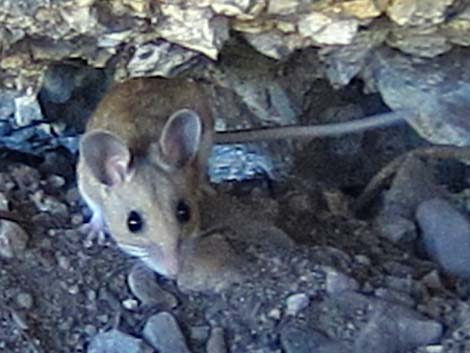 |
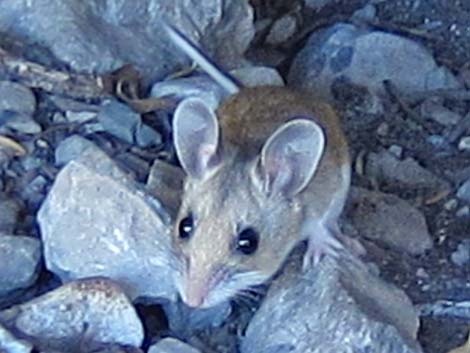 |
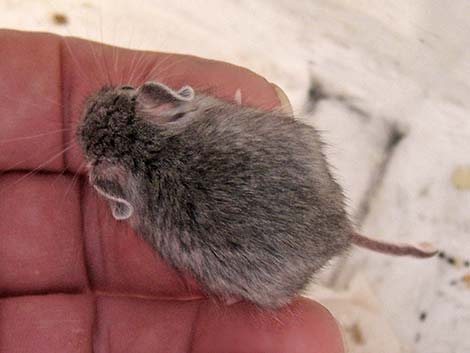 Young mice fresh out of the nest |
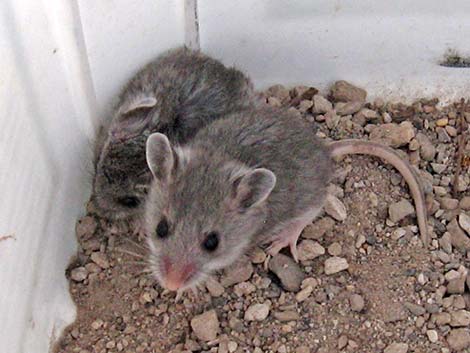 Young mice fresh out of the nest |
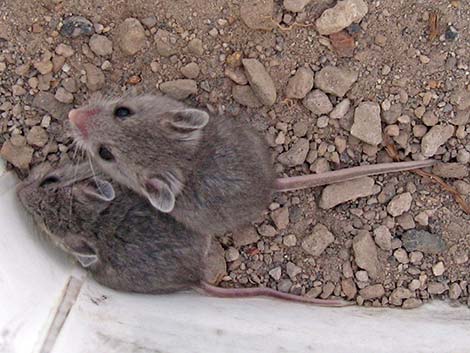 Young mice fresh out of the nest |
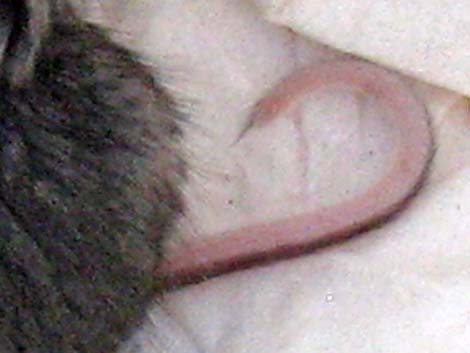 Distinct line between dark and light hairs on the tail |
Note: All distances, elevations, and other facts are approximate.
![]() ; Last updated 231227
; Last updated 231227
| Mammals Around Las Vegas | Wildlife Around Las Vegas | Glossary | Copyright, Conditions, Disclaimer | Home |